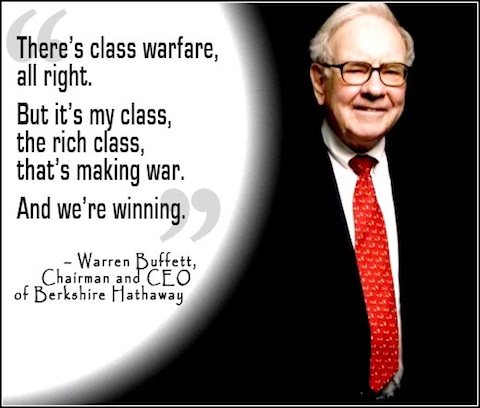American conservatives are not interested in poverty. Their consuming interest is self-aggrandizement enhanced by unfettered capitalism for the lucky few. It must never be hinted that the interlocking matrix of unacknowledged perquisites that comprising the ample menu of corporate welfare is designed to create wealth disparity, with the ungodly rich sequestering an ever larger slice of the pie, until economic calamities like The Great Depression and The Great Recession. Despite its tremendous productive capability, Capitalism is the primary driver of poverty, and not just because the wealthy vacuum resources to the pyramid but even more importantly (at this tipping point in economic history) because automation, robotization and software enhancement ensure the demise of most traditional "jobs."
"Automation, Robotization, Software-Enhanced Productivity and Permanent Job Loss"
http://paxonbothhouses.
Typically, capitalist cheerleaders still in search of their "lucky break" are persuaded to carry water for those who live in opulent sties.
Among America's wealthiest citizens, "insiders" Bill Gates and Warren Buffett know full well how the game is actually played..
Buffett put it best:

NSS
***
"Politics and Economics: The 101 Courses You Wish You Had"
Good interactive graphic at http://www.washingtonpost.com/blogs/wonkblog/wp/2014/02/19/the-best-case-that-the-war-on-poverty-has-failed/?wpisrc=nl_wnkpm
This year marked the 50th anniversary of the War on Poverty, launched by Lyndon B. Johnson in his 1964 State of the Union address, and it has prompted a wide-ranging debate on whether that battle has succeeded or failed. Republicans such as Rep. Paul Ryan and Sen. Marco Rubio have called it a failure, citing the official Census poverty rate, which shows basically no improvement in the last half-century.
On its own merits, the measurement is misleading. As has been well-documented, the official poverty rate fails to take into account significant parts of the nation's safety net. In reality, as you can see in the interactive chart above, the safety net has reduced the poverty rate from 26 percent in 1967 to 16 percent in 2012. The chart is using a measure of poverty developed by economists at Columbia University and elsewhere that analyzes how many people fall below the poverty line once taxes and transfers (such as food stamps ) are factored in.
) are factored in.
 ) are factored in.
) are factored in.
So, to the degree that the War on Poverty was a war to ensure that more Americans have the resources to meet the most basic needs of their lives -- even if that required a massive increase in the size of the welfare state -- the effort has been a resounding success. Millions upon millions of Americans have lived a more decent life because of taxpayer support.
But to the degree that the War on Poverty should have led U.S. companies to pay their workers adequate wages and prompted sufficient enough demand to ensure full employment, the war has been a failure. If you return to the interactive chart above, and click on "poverty rate without the safety net," you'll see that 28.7 percent of the country would be in poverty today without government policies to help them -- actually higher than it was 50 years ago.
And so, in that sense, it's hard to say we've won the War on Poverty when nearly 1 in 3 Americans lacks, without the government's help, the sustenance necessary to meet the basic needs of life.

No comments:
Post a Comment